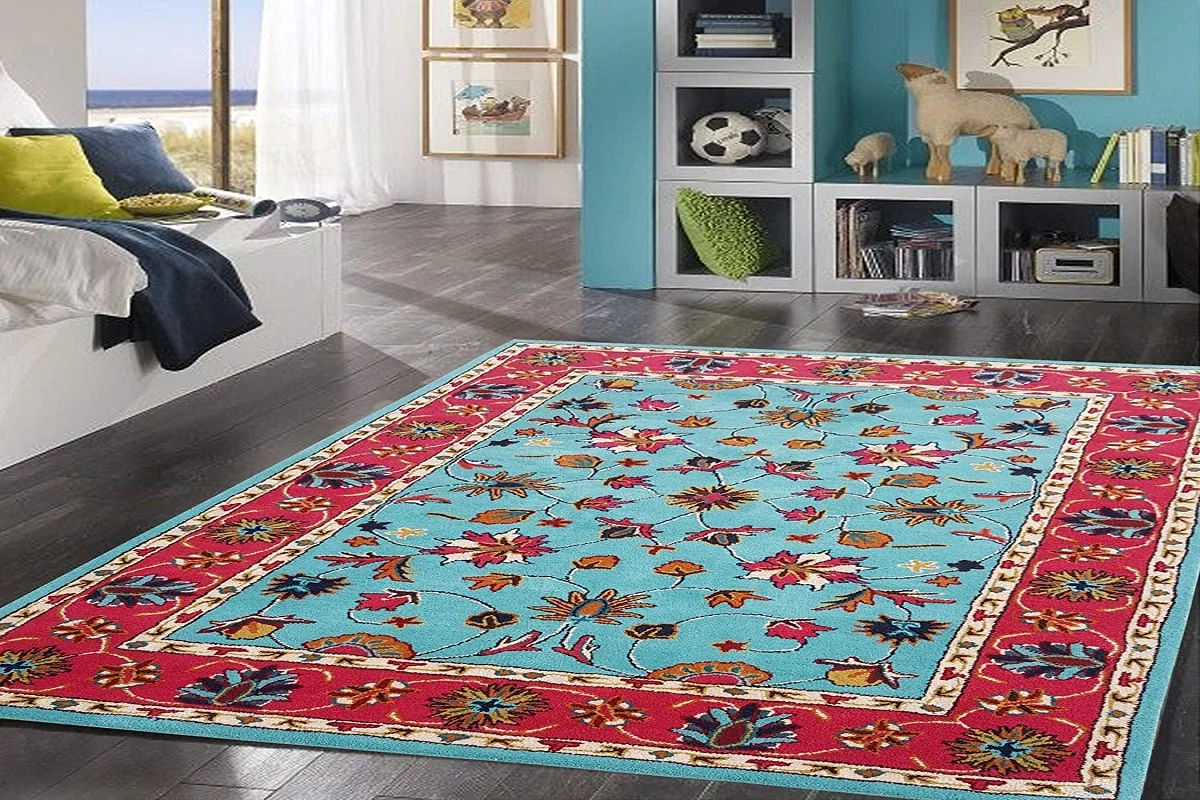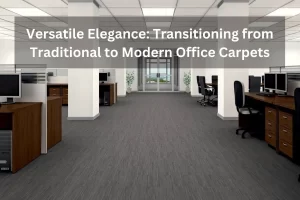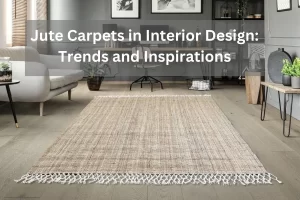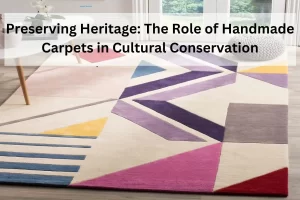Nestled within the intricate threads of Persian carpets lies a rich tapestry of tradition, artistry, and cultural expression. Renowned the world over for their exquisite beauty and meticulous craftsmanship, Persian rugs have woven their way into the hearts and homes of enthusiasts, collectors, and connoisseurs alike. Beyond their utilitarian purpose, these carpets are veritable works of art, each pattern and motif telling a story that stretches back through centuries of history.
Join us on a journey as we unravel the enchanting world of Persian rug patterns, where every knot and colour holds a significance that transcends mere aesthetics. From the bustling bazaars of Tehran to the nomadic tribes of Iran’s vast landscapes, the patterns of Persian rugs are a reflection of the diverse cultural influences that have shaped this ancient craft. Let’s embark on a voyage of discovery, exploring the symbolic language, regional variations, and timeless allure that make Persian rug patterns a captivating subject of study and admiration. As we tread upon this woven canvas, we’ll delve into the stories, meanings, and craftsmanship that elevate Persian carpets to more than just floor coverings—they are windows into a cultural legacy that continues to captivate and inspire.
Brief overview of the allure and cultural significance of Persian carpets
Persian carpets, often hailed as the epitome of artistry in the world of textiles, boast an enduring allure and profound cultural significance. Woven with meticulous craftsmanship passed down through generations, these carpets are not mere floor coverings but rather intricate pieces of cultural expression. Their allure lies in the harmonious marriage of stunning aesthetics and profound symbolism.
Dating back over two millennia, Persian carpets have stood witness to the rise and fall of empires, reflecting the cultural tapestry of the region. Each rug tells a story, narrating the history, beliefs, and artistic traditions of the people who crafted them. The intricate patterns and vibrant colours are not arbitrary; rather, they carry deep symbolic meanings, often rooted in Persian literature, mythology, and religious beliefs.
Beyond their visual appeal, Persian carpets serve as a source of national pride, embodying the rich heritage of Iran. Passed down as family heirlooms, gifted at weddings, and displayed in homes as works of art, these carpets are integral to Persian identity. The craftsmanship involved, often utilising hand-knotting techniques and natural dyes, adds to their allure, making them not only aesthetically pleasing but also a testament to the skill and dedication of the artisans.
In the global context, Persian carpets are sought after for their timeless beauty and cultural resonance. Their presence in homes, museums, and elite collections around the world attests to their universal appeal. The allure of Persian carpets extends beyond their physical form; it encompasses the stories they carry, the traditions they represent, and the cultural richness they bring to the spaces they adorn.
Benefits of Persian carpets
Aesthetic Splendour:
Persian carpets are renowned for their exquisite beauty and intricate designs, adding a touch of timeless elegance to any space. Their rich colours, intricate patterns, and cultural motifs can enhance the aesthetic appeal of a room, serving as a focal point or complementing existing décor.
Cultural Heritage:
Owning a Persian carpet is like having a piece of history and culture beneath your feet. These carpets are woven with traditions passed down through generations, carrying the essence of Persian artistry, mythology, and symbolism. They provide a unique connection to the rich cultural heritage of Iran.
Quality Craftsmanship:
Persian carpets are often handcrafted using traditional methods, including hand-knotting and the use of natural dyes. This meticulous craftsmanship not only contributes to their visual appeal but also ensures durability. Genuine Persian carpets can withstand the test of time, becoming cherished heirlooms.
Symbolic Significance:
Every element of a Persian carpet, from the choice of colours to the specific motifs, holds symbolic significance. These symbols often convey cultural, religious, or regional meanings, adding layers of depth and storytelling to the carpet. This makes owning a Persian carpet a meaningful and symbolic experience.
Warmth and Comfort:
The dense pile and high-quality wool or silk used in Persian carpets contribute to their comfort underfoot. Beyond their artistic value, these carpets provide a warm and inviting atmosphere in homes, making them an ideal choice for creating cosy living spaces.
Sound Insulation:
Persian carpets, with their thick pile, act as effective sound insulators. They absorb sound, reducing echo and minimising noise levels in a room. This acoustic benefit is particularly valuable in larger spaces or homes with hardwood or tile flooring.
Uses of Persian carpets
Floor Covering:
The primary and traditional use of Persian carpets is as elegant floor coverings. They add warmth and luxury to living spaces, bedrooms, and even hallways, providing a comfortable and aesthetically pleasing surface underfoot.
Wall Hangings:
Persian carpets, especially those with intricate designs and vibrant colours, are often used as decorative wall hangings. They can transform a blank wall into a visually stunning focal point, creating a unique and artful display.
Tabletop Accents:
Smaller Persian carpets or carpet sections are frequently repurposed as tabletop accents. Placed on dining tables, coffee tables, or side tables, they add a touch of sophistication and protect the underlying surface.
Cultural and Religious Spaces:
Persian carpets are commonly used in cultural and religious contexts. In mosques, homes, and community spaces, these carpets are spread out for prayers, providing a clean and comfortable area for worship.
Event and Celebration Décor:
During special occasions such as weddings or cultural celebrations, Persian carpets are often used as decorative elements. They may be spread across event spaces or used as part of the overall décor, contributing to the festive atmosphere.
Artistic Throws and Tapestries:
Smaller or antique Persian carpets can be repurposed as throws or tapestries. Draped over furniture or hung on walls, they serve as functional and decorative pieces, infusing a touch of artistic flair into the living space.
Furniture Coverings:
Persian carpets can be employed to cover or accentuate furniture pieces. They add a layer of opulence to sofas, chairs, or ottomans, offering both protection for the furniture and a unique design element.
Cultural Exhibitions and Museums:
Due to their historical and artistic significance, Persian carpets are often featured in cultural exhibitions and museums. They serve as captivating exhibits, showcasing the craftsmanship, design, and cultural stories behind each piece.
Photo Backdrops:
Photographers and event planners often use Persian carpets as decorative backdrops for photoshoots or special events. The intricate patterns and colours create visually stunning backgrounds.
Gifts and Heirlooms:
Persian carpets are cherished as gifts, passed down through generations as family heirlooms. They carry sentimental value and become enduring symbols of tradition and heritage within families.
Caring for Maintenance Tips of Persian Carpets
Owning a Persian carpet is not just an investment in beauty; it’s a commitment to preserving a piece of cultural heritage. To ensure your carpet retains its timeless allure and longevity, here are essential care and maintenance tips:
Regular Vacuuming:
- Vacuum your Persian carpet regularly to remove dust and dirt.
- Use a vacuum cleaner with adjustable height settings to prevent excessive pressure on the fibres.
Rotate Your Carpet:
- Rotate your carpet every 6 months to ensure even wear, especially in high-traffic areas.
- This helps prevent one section from bearing the brunt of foot traffic, maintaining the carpet’s overall appearance.
Avoid Direct Sunlight:
- Minimise exposure to direct sunlight to prevent colours from fading.
- Consider using curtains or blinds to protect your Persian carpet from prolonged sunlight exposure.
Immediate Stain Removal
- Act promptly if spills occur; blot the stain with a clean, dry cloth.
- Avoid rubbing, as it can push the stain deeper into the fibres.
- Use a mild solution of water and white vinegar or a designated carpet cleaner for stain removal.
Professional Cleaning:
- Schedule professional cleaning every 12-18 months, depending on usage.
- Choose experienced cleaners familiar with Persian carpets to ensure proper care and preservation of delicate fibres.
Protect from Heavy Furniture:
- Place furniture pads under heavy pieces to distribute weight evenly.
- Avoid dragging furniture across the carpet to prevent damage to the fibres
Mind Your Shoes:
- Remove shoes before walking on the carpet to minimise dirt and abrasive particles.
- Consider placing doormats at entrances to reduce the amount of debris brought indoors.
Conclusion
In the intricate patterns and vibrant hues of Persian carpets, we discover more than just floor coverings; we find a cultural legacy meticulously woven into every thread. As we conclude our journey into the world of Persian carpets, it’s evident that these exquisite creations transcend mere home décor—they are living expressions of artistry, tradition, and heritage.







